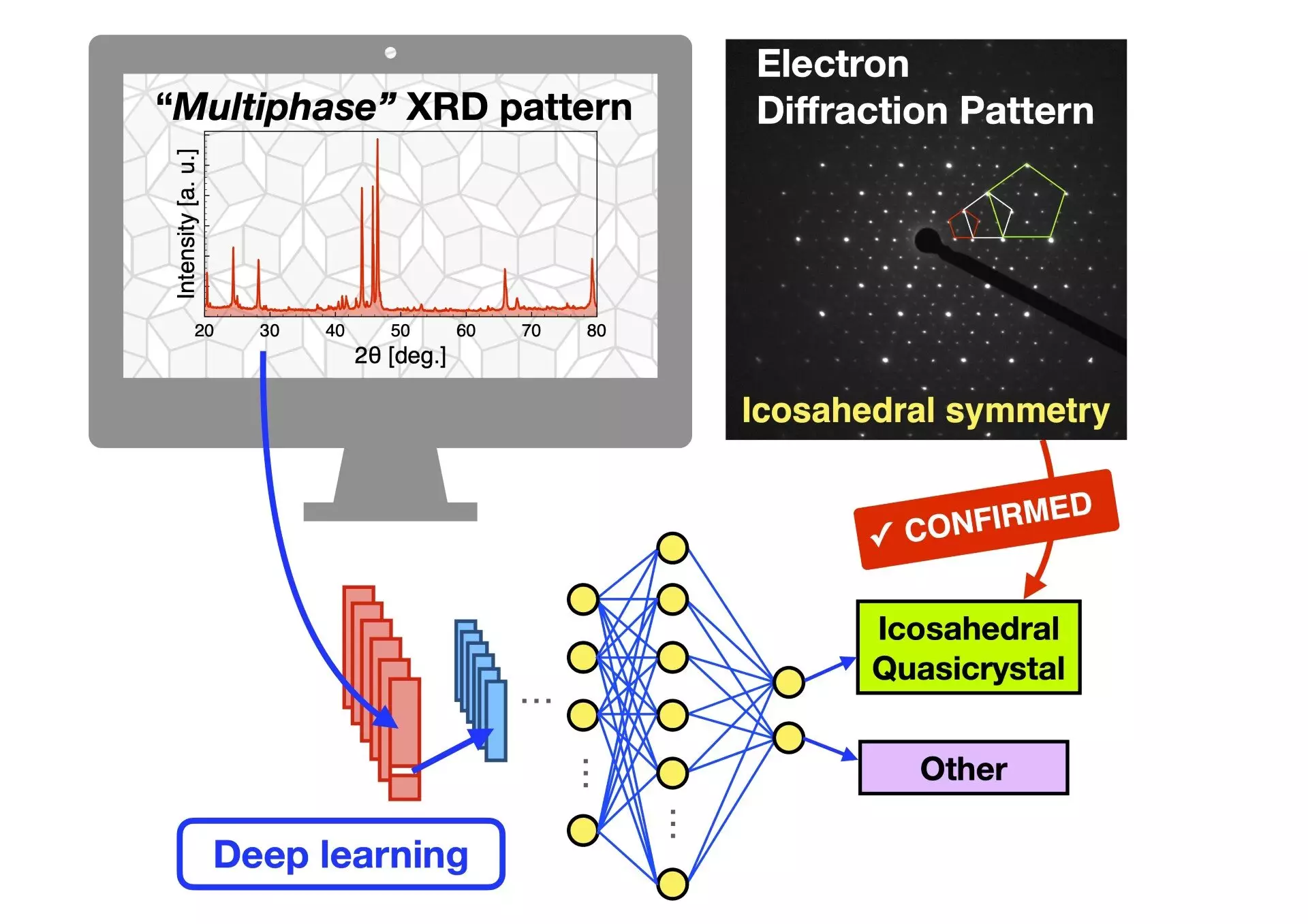Crystalline materials play a crucial role in various industries, including semiconductors, pharmaceuticals, photovoltaics, and catalysts. The identification of these materials is essential for their development and utilization. Currently, powder X-ray diffraction is the widely used method for determining the structure of crystalline materials. However, the identification becomes challenging when dealing with multiphase samples containing different types of crystals. Recognizing the need for a more efficient approach, researchers from Tokyo University of Science (TUS), National Defense Academy, National Institute for Materials Science, Tohoku University, and The Institute of Statistical Mathematics have proposed a novel machine learning model for identifying icosahedral quasicrystal (i-QC) phases from multiphase powder X-ray diffraction patterns.
The Challenge of Identifying Unknown Phases
Identifying unknown phases in multiphase samples has traditionally relied on the expertise of scientists, which can be time-consuming. While previous data-driven methods have been successful in collecting information about known phases, the identification of unknown phases has remained a challenge. To address this issue, the researchers developed a machine learning “binary classifier” model that can identify the presence of i-QC phases accurately.
The researchers created a “binary classifier” using 80 types of convolutional neural networks as the basis for their model. They trained the model using synthetic multiphase X-ray diffraction patterns, designed to represent the expected patterns associated with i-QC phases. The performance of the model was then assessed using both synthetic patterns and a database of actual patterns. Remarkably, the model achieved a prediction accuracy of over 92%.
The model’s effectiveness was demonstrated by successfully identifying an unknown i-QC phase within multiphase Al-Si-Ru alloys. It analyzed 440 measured diffraction patterns from unknown materials in six different alloy systems and accurately detected the presence of the unknown i-QC phase. The identification was further corroborated by analyzing the microstructure and composition of the material using transmission electron microscopy. Significantly, the model was able to identify the i-QC phase even when it was not the most prominent component in the mixture.
The proposed deep learning model not only identifies i-QC phases but also holds promise for the identification of new decagonal and dodecagonal QCs. Moreover, it has the potential to be extended to various other types of crystalline materials. This breakthrough model allows for the detection of unknown quasicrystalline phases in multiphase samples with high accuracy, potentially accelerating the process of phase identification in various industries.
The development of a machine learning model for identifying i-QC phases in multiphase materials marks a significant advancement in materials science. With its high accuracy in detecting unknown phases, this model has the potential to revolutionize the field. By leveraging the power of machine learning, researchers from Tokyo University of Science and their collaborators have provided a new and efficient approach for identifying entirely new phases in a range of crystalline materials, opening up new possibilities for advancements in various industries.


Leave a Reply